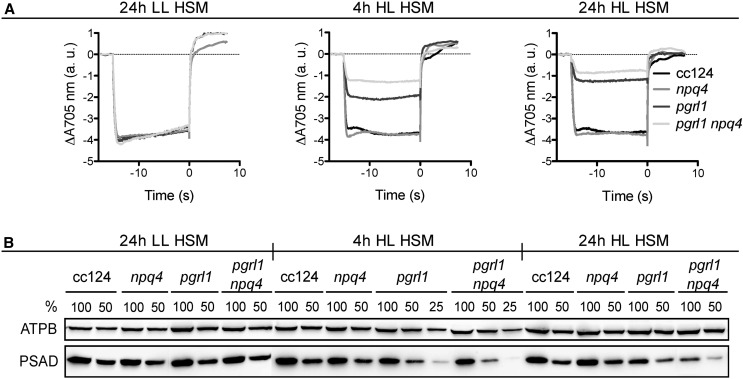Figure 7.
Lack of LHCSR3 results in a pronounced photoinhibition of PSI in pgrl1 npq4 compared with pgrl1 cells under high light conditions. A, Maximal P700 oxidation amplitude is severely compromised in pgrl1 and even more in pgrl1 npq4. P700 oxidoreduction kinetics were measured under aerobic conditions with actinic light intensity of 3,300 μmol photons m−2 s−1 in the presence of 40 µm 3-(3,4-dichlorophenyl)-1,1-dimethylurea (DCMU) to block PSII, giving access to the full amount of oxidizable P700. Cells were acclimated to low-light conditions (Tris-acetate phosphate [TAP] medium) before incubation (4 μg chlorophyll mL−1) in minimal medium (high salt medium [HSM]) at low light (LL) for 24 h or at high light (HL) for 4 and 24 h. Data represent three biological replicates ± sd. B, PSI is degraded faster in pgrl1 npq4 than in pgrl1 due to high light exposure, as shown by western-blot analysis of the PSAD subunit. ATPB served as a loading control. Whole-cell extracts were loaded per chlorophyll basis (100% = 2.5 µg).

